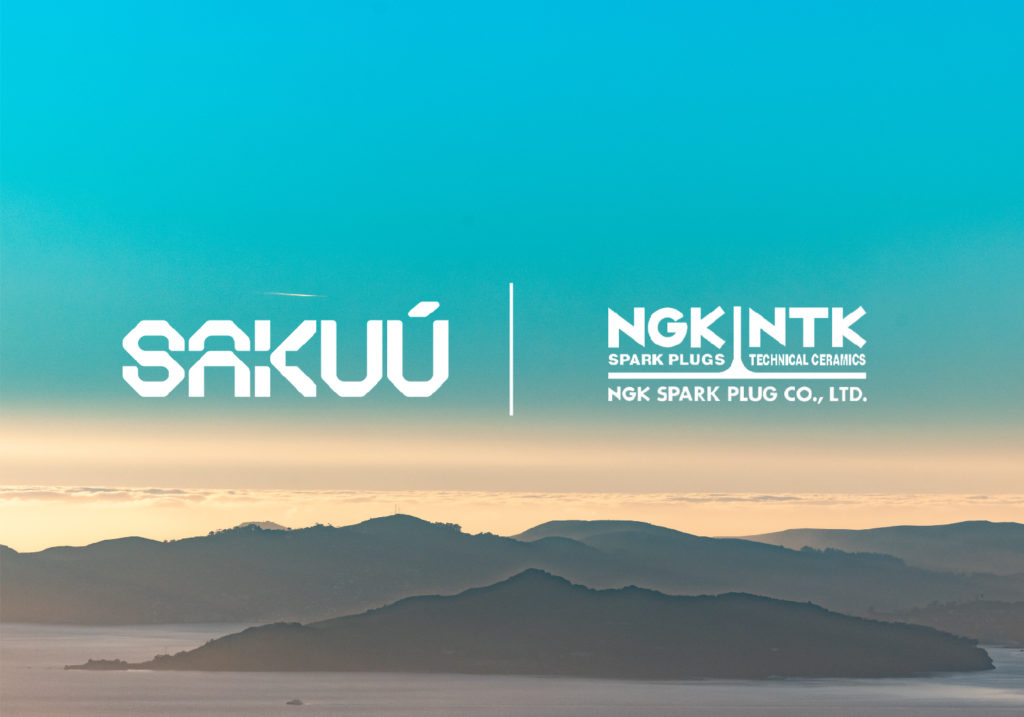As Bay Area startup Sakuu continues toward commercialization of its solid state battery (SSB) 3D printing technology, the company has secured a partnership with NGK Spark Plugs (TYO: 5334), a tier-one automotive supplier. According to a memorandum of understanding between the two firms, NGK will co-develop and provide ceramic materials for Sakuu’s SSB production, both for its pilot line facility and as the company reaches at-scale manufacturing, expected to begin in 2023.
Sakuu has developed a process that combines binder jet and inkjet 3D printing to manufacture multi-material parts from glass, metals, polymers, and ceramics. The first targeted application for the technology is SSBs. So far, it has reached several milestones for its non-printed SSBs, including 800Wh/l energy density with high C rates. Meanwhile, it is at work on making its additive manufacturing (AM) system capable of producing these batteries at scale. The startup claims that its SSBs can be up to 50 percent smaller and 30 percent lighter than currently available lithium ion batteries. Not only that, but Sakuu suggests that they can be mass produced at a lower cost, while introducing such benefits as custom shapes and sizes thanks to AM.
Sakuu Secures Battery 3D Printing Partnerships
Sakuu has also established partnerships that lend credence to the firm’s technological and business roadmaps, particularly investment from auto supplier Musashi Seimitsu. The Japanese company has large institutional ownership from such firms as T. Rowe Price and Sumitomo Mitsui, while Sakuu’s new partner, NGK, is primarily owned by Mitsubishi, via the Master Trust Bank of Japan and Meiji Yasuda Life Insurance. Sumimoto Mitsui is the result of a merger between two of Japan’s largest conglomerates, with Sumimoto possibly most well-known as the parent of Mazda Motor Corporation and Mitsui possibly most well-known as the owner of Toshiba and Sapporo. However, all of the aforementioned companies are massive and cover a dizzying array of industries.
Sakuu’s non-printed lithium metal anode battery that has achieved a benchmark-setting 800Wh/l energy density, and now high C rates, will go to market in 4Q2022.
The partnership with NGK further signals confidence in Sakuu, while also building it up as an important representative of Japanese interest in the global AM sector, so far dominated by Mitsubishi. The firm is a specialist in making and selling spark plugs and related products for combustion engines, as well as sensors and ceramics. Generating revenues of almost USD$1 billion, NGK employs around 16,100 people across 60 companies and 35 production plants globally. It is also involved in motor sports, providing parts to such groups as the Scuderia Ferrari Formula 1 team.
“Formalizing this long-term partnership agreement with NGK for ceramic needs across our printed battery line is an important step in Sakuu’s commercialization plans,” said Arwed Niestroj, SVP of Customer Enablement for Sakuu. “NGK is a global industry leader, and its material quality and technical expertise will allow Sakuu to rapidly advance towards bringing to market our next-generation battery line.”
“We are happy to use our 80 years of experience in ceramic materials to collaborate with Sakuu, the clear trailblazer in 3D printing solid-state batteries. Their work is truly impressive, and we look forward to making this industry-leading solid-state battery line into a significant business opportunity for both companies,” said Keiji Suzuki, Executive Officer of R&D division at NGK.
Though Sakuu has said that its pilot facility is up and running, we’ll have to wait until it begins commercially delivering products to be sure of the progress the company is making. The 3D printing of batteries is an exciting space with a lot of potential, particularly for recycling used materials into new energy devices. Given the high demand for electric vehicles, computers, phones, and more, the ability to 3D print new batteries from old ones could be crucial to maintaining our current supply of materials. With the added benefits of increased energy density and compact, custom sizes and shapes, it could be a game changer for how we produce energy storage products.
